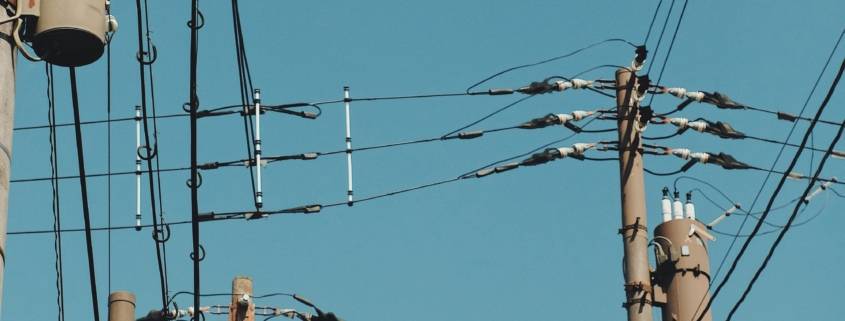Most business owners view the whole insurance purchase and claims process as a black art, which this writer completely understands. After 25 years in the business, I too scratch my head at some of the “spells” insurance carriers concoct.
Let me try and be as succinct as possible as I will focus on three main considerations:
- Purpose of business income coverage
- Coverage triggers
- A brief paragraph on valuations
Purpose of Business Income Coverage:
The main purpose of business interruption insurance coverage is for business continuity. It provides funds to pay for continuing expenses that remain even though the business is not operational at the moment. These necessary expenses keep the business viable for its eventual return. One example would be key staff, such as an executive chef. You wouldn’t want to lose their talents which are intrinsic to the success of your business, thus their compensation remains even though the kitchen is inoperable. There are very specific loss formulas and calculation variables that are used by insurance carriers contained in your policy that determines the amounts. See Item 3 for more information on valuations.
There are essentially three levels of business interruption coverage:
Standard Business Interruption Insurance coverage –
Intended to compensate the insured for income lost during the period of restoration. Continue until owner bring the operations and or facilities back online and fully functioning.
Extended Business Interruption –
Provides additional coverage augmenting the standard business interruption coverage for a specific period of time once the facility or operation has been brought back online. An example of which might be a restaurant that re-opens after 6 months of restoration. It may take time for the public to return, which means their sales will be off until word gets out. Extended Business Interruption would help bridge that sales gap for 30, 60, or 90 days contingent on how much you purchase at the outset.
Contingent Business Interruption –
Provides coverage above and beyond the standard business interruption insurance for damage or loss of income due to a loss for a key supplier, or a key tenant. I’ll give an example. Years ago Corning had a fire at their factory which supplied the majority of the screens for Samsung’s flat panels. Samsung had a significant drop in sales as they could not fill orders. Those customers bought from other manufacturers resulting in a net income loss for Samsung.
These are the three many levels of business interruption coverage. Most businesses have the Standard level. If your business might suffer losses from a time perspective, contingent supplier, or an anchor tenant, consider these enhancements.
What Triggers Business Interruption Insurance?
Great question, glad I asked. Coverage triggers are one of the most important features or mechanisms contained in all insurance policies. When a claim is presented insurance carriers ask two questions: what clause in the insurance contract “triggers” coverage, and what exclusions or limitations contained in the insurance contract “trigger” a claim denial. It’s either one or the other; guess which one they focus on most?
Essentially it comes down to a few critical answers:
- Is the event that caused the loss, a “covered peril” as defined in the insurance policy? Hint, fire is a covered peril, flood is typically not.
- Did the business suffer a loss of business income as a result of suspension of operations resulting from that loss?
- Did the business suffer property damage from a covered location on the policy?
- Is the business being made whole for continuity purposes or is there an economic gain resulting from the coverage?
Examples
These are the main coverage triggers we look at from the outset. There are other more nuanced considerations in certain cases however I didn’t want this to turn into a doctoral thesis.
During Hurricane Sandy, many businesses suffered the loss of business income because their business had shut down for a period of time resulting in a potential net income loss. We fielded hundreds of questions in this vein. Sadly most of the losses were a result of flooding which was not a “covered peril” thus business income was NOT triggered.
In other situations, we made a case that a pre-emptive utility shut down by civil authority or landlord to protect their electrical infrastructure resulted in the loss, and not the flood. This argument only works if you also have the proper utility interruption coverage endorsement on the policy which triggers coverage. In absence of that endorsement, coverage would not apply to business income as losses didn’t result from a covered peril. Some folks call this confusing, I call it job security. If you are unsure if coverage is triggered or not we suggest you speak to a Risk Advisor for a second opinion on your specific situation.
Business Interruption Valuations:
Here’s where the weeds get really deep. In the vast majority of policies that include business interruption coverage there usually is contained deep in the policy pages a standard formula or calculation that brings certain income and expenses in, and carves certain expenses and income out. An example of such might be utilities or rent that ceases during the period of restoration. Since the expense no longer occurs while the business is dormant the carriers pull this item out of their calculation. Within the methodology, both income and expenses brought in and out contingent on how necessary they are to continue business.
Another example is key staff versus line staff. It’s critical for certain businesses to maintain payroll for key management or staff, but not for everyone. Thus the calculation for payroll reimbursement usually only contemplates critical staff. The rest are furloughed thus the expense does not perpetuate and is not in the calculation.
One of the most valuable services we provide clients is a Pre Loss Analysis whereby we do the business interruption calculation prior to a loss to test the coverage limits and triggers to ascertain how accurate it is if a sizable loss truly occurred. We have found that 98% of businesses are vastly underinsured for business interruption when we actually did the pre-loss calculations.
Why MetRisk
Industries that are susceptible to being underinsured for business interruption are Real Estate (Commercial & Residential), Manufacturing, Hospitality (Restaurants, Hotels), Retail & Wholesale Operations, and Healthcare.
We suggest you contact a Risk Advisor to do a Business Interruption Pre Loss Calculation, or simply order our free worksheet to do the calculation yourself. We believe it’s an enormously important exercise to do preemptively before a loss occurs. The survival of your business may depend on simple math.







